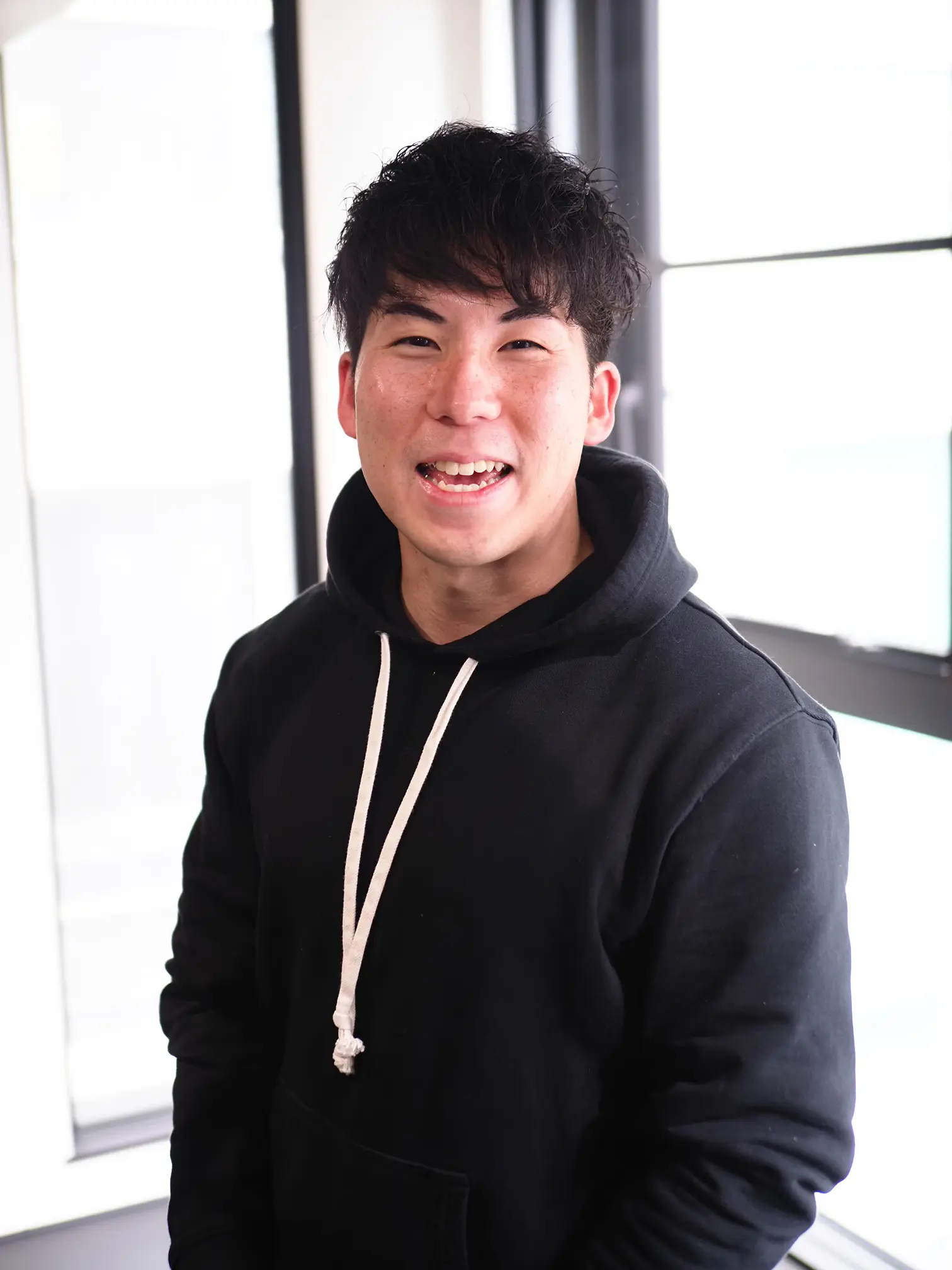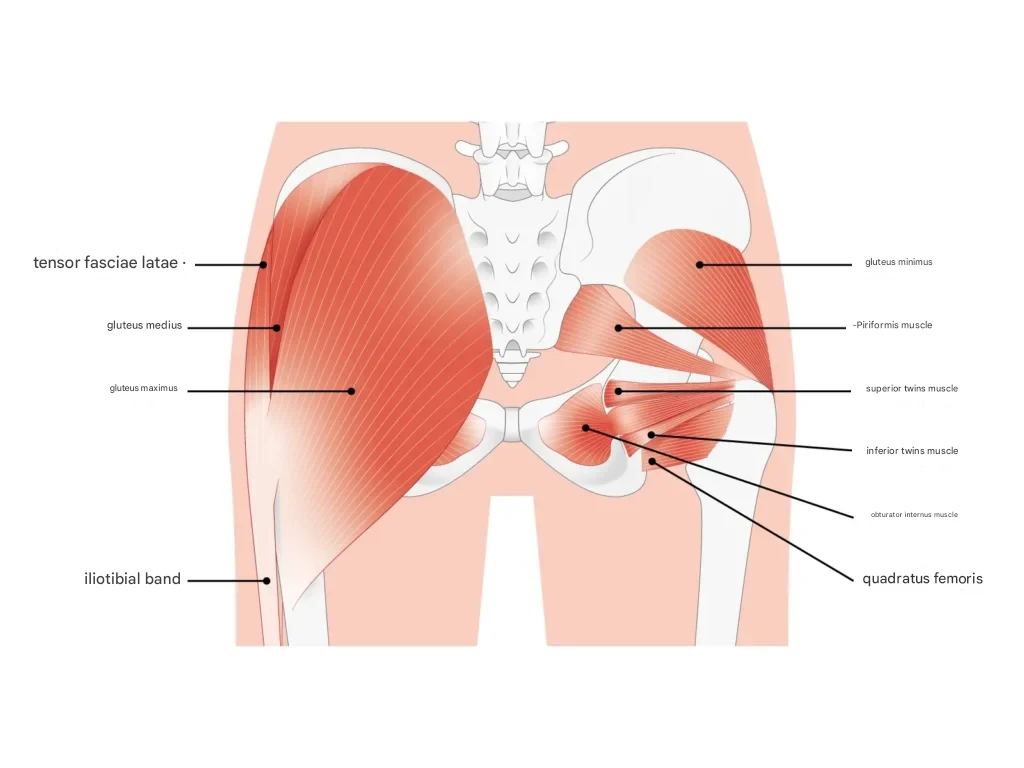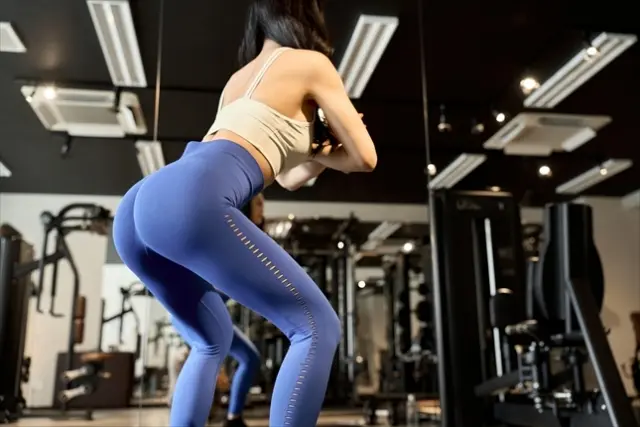
- Do you feel like your hips are sagging?
- Is the line between your hips and thighs becoming unclear?
- Are you not seeing results even though you’re training?
- Do you want to lift your hips but don’t know which muscles to target?
- Are you trying to train your glutes, but your front thighs are getting bulky and sore instead?
Are you struggling and frustrated because your self-guided training isn’t producing results?

To successfully achieve a hip-up, it’s crucial to understand muscle mechanics and perform exercises with the correct form.
Knowing the right techniques makes a huge difference in your results.
This article introduces the shortest route to your ideal hip line!
- You want to look great in jeans.
- You want to feel confident about your back profile in the mirror.
- You want to know how to do hip-up training at home.
Whether you want to learn the “correct form” and “techniques” for hip-up training, or you are concerned about large, flat, or shapeless glutes.
We will provide a thorough explanation from a professional perspective.
Why Do Hips Sag? A Thorough Explanation of the Causes

To achieve your ideal hip line, it’s important to first understand the causes.
The main causes can be categorized into the following three areas:
Muscle Imbalance and Body Fat Disproportion
Sagging or loss of hip shape is primarily due to the weakening of the foundational muscles and the condition of the fat on top of them.
Weakened Gluteal Muscles
Due to aging, lack of exercise, or prolonged desk work, the large glute muscles (gluteus maximus and medius) are not consciously used and begin to atrophy. The muscles from the hips to the back and hamstrings naturally weaken if not actively engaged. Muscle weakening also reduces fat burning, leading to weight and body fat gain.
Increase (or Rapid Decrease) in Body Fat
When body fat (especially subcutaneous fat) increases, the hips become heavier and more prone to sagging due to gravity. Conversely, drastic dieting that results in too much fat loss can cause the skin to sag and muscle mass to decrease, leading to loose, flat hips.
Posture and Pelvic Distortion
Poor daily habits and posture are the biggest factors that prevent the hip muscles from functioning correctly and cause them to lose shape.
Poor Sitting Posture
Slouching back in a chair tilts the pelvis backward (posterior pelvic tilt) and causes a hunchback. When the glutes are “squashed” for long periods, it results in a sagging, flat butt (flat posterior).
Muscle Disuse Due to Poor Posture
Walking with poor posture, such as a hunchback or excessive arch in the lower back (swayback), causes the hip muscles to “turn off” or “take a break.” Instead, you overuse the muscles in the front or outer thighs. Especially in Japanese people, a lack of pelvic rotation often leads to a gait that underutilizes the hamstrings.
Habits That Cause Pelvic Distortion
- Habits like crossing your legs
- shifting weight to one side
- or carrying a bag on only one shoulder
can distort the pelvis and unbalance the gluteal muscles, leading to loss of shape.
Functional Decline from “Too Much Sitting”
A common problem for modern people is lack of exercise and excessive sitting.
Prolonged desk work keeps the hip muscles in a “squashed state,” which hinders blood and lymphatic circulation, leading to the accumulation of waste products.
Continuous sitting causes the hip muscles (especially the gluteus medius) to develop a habit of “slacking off,” so they are not properly activated when standing or walking.
Target These: The 3 Essential Gluteal Muscles for Hip-Up Training
The gluteal muscles primarily consist of three muscles, each with a different role.
To create your ideal hip line, it is essential to train all of them in a balanced way.

| Muscle Name | Characteristics and Main Role | Hip-Up Effect |
|---|---|---|
| Gluteus Maximus | The largest gluteal muscle, covering the entire hip’s surface. It’s responsible for powerful movements like standing up and climbing stairs. It is one of the body’s largest muscles. |
|
| Gluteus Medius | Located deeper than the gluteus maximus, on the upper outer side of the hip. A fan-shaped inner muscle. Stabilizes the pelvis during walking and standing. |
|
| Gluteus Minimus | The deepest inner muscle, supporting the gluteus maximus and medius. A key muscle for stabilizing the hip joint (centration). |
|
Surprisingly Important! Supporting Muscles for a Hip-Up
You can’t achieve ideal roundness and height by only training the gluteal muscles.
Strengthening the surrounding foundational muscles is also necessary to allow the gluteal muscles to function correctly.

| Muscle Name | Characteristics and Main Role |
|---|---|
| Hamstrings (Back of the Thigh) | Connected to the gluteal muscles. Toning them creates a clear boundary between the thigh and hip line. Prevents hip sagging (butt droop). |
| Erector Spinae (Iliocostalis, Longissimus, Spinalis) | The foundation muscles that support the spine. Stabilizing the pelvis allows the gluteus maximus to exert its maximum force. |
| Core (Abdomen and Spine Area) | Stabilizes the pelvis and maintains correct posture. A stable core reduces pelvic distortion (a cause of hip sagging) and allows for the efficient use of gluteus maximus strength. |

Training the entire body, including the core, in a balanced way is the shortest route to a successful hip-up.
The Amazing Effects and Benefits of Hip-Up Training

| Category | Effect/Benefit | Details |
|---|---|---|
| Aesthetics | Improved Hip Line & Better Physique | Toned hips and a lifted posterior create a clearer boundary between the hips and thighs, resulting in a leg-lengthening effect. Related areas like the waist and thighs also tone up, giving the whole body a better shape. |
| Improved Posture & Better Impression | A stable pelvis and straightened spine lead to a beautiful standing posture. You project confidence and improve your overall impression. | |
| Health | Increased Basal Metabolism | Training the body’s largest muscle (gluteus maximus) boosts basal metabolism, creating a body that is easier to lose weight and harder to gain fat (increased energy expenditure). |
| Lower Back Pain Prevention & Lighter Movement | A stable pelvis allows you to use the correct muscles with the correct posture, reducing lower back and shoulder pain. Breathing also deepens. Movements like standing, walking, and climbing become lighter and less tiring. Also effective for postpartum pelvic care. |
[Level-Specific] Selected At-Home Hip-Up Training Workouts
Beginner Hip-Up Workouts
- Lie on your back with knees bent at 90 degrees and feet flat on the floor.
- Place hands by your sides.
- Slowly lift your hips until your knees, hips, and shoulders form a straight line, supporting your body with your feet, shoulder blades, and head.
- Hold for 3 seconds, then slowly lower.
Tip:
- Consciously squeeze the gluteal muscles!
- Use your hips, not your lower back, to lift.
Effect:
Lifts the lower part of the glutes to create a clean hip line.
- Start on all fours (hands and knees on the floor).
- Slowly lift one leg straight back.
- Stop at the height where you feel a squeeze in your glutes, and slowly return.
- Repeat about 10 times, then switch legs.
Tip:
- Don’t lift your leg too high; stop where you feel the tension in your glutes.
- Be careful not to arch your lower back!
Effect:
Builds the roundness of the hips and prevents sagging.
- Hold a water bottle or a light dumbbell with both hands in front of your chest.
- Stand with feet slightly wider than shoulder-width.
- Keeping your back straight, slowly lower your hips.
- Ensure your knees don’t go past your toes, then stand up.
Tip:
- Don’t round your back!
- Imagine pushing your hips backward as you squat.
Effect:
Trains the thighs and glutes together, slimming the lower body.
- Lie on your side.
- Bend your knees slightly and keep your feet together.
- Keeping your heels touching, slowly open your top knee.
- Stop where you feel a squeeze in the side of your hip, and slowly return.
Tip:
- Keep your body stable!
- It’s important to consciously open the knee using the side hip muscles.
Effect:
Tones the side of the hips and sculpts a better leg line.
Intermediate Hip-Up Workouts
- Stand with feet wide apart and toes pointed outward.
- Hold a dumbbell (or water bottle) with both hands in front of your body.
- Keeping your back straight, slowly lower your hips.
- Make sure your knees track in the direction of your toes as you stand up.
Tip:
- Hinge at the hips as if pushing your butt backward for better effect.
- Engage your entire lower body.
Effect:
Tones the inner thighs and glutes together, resulting in a tight hip line.
- Place a chair or platform behind you and rest the top of one foot on it.
- Step the other foot forward.
- Slowly lower your hips and stand up, supporting your body with the front foot.
Tip:
- Don’t lean too far forward.
- Imagine pushing the ground firmly with the heel of your front foot.
Effect:
Trains each hip individually for balanced hip-up results.
- Sit with your back against the edge of a sofa or bench.
- Place one foot flat on the floor and extend the other leg straight forward.
- Push with the foot on the floor to lift your hips until your body forms a straight line.
- Slowly lower and repeat.
Tip:
- Squeeze your hips hard at the top!
- Keep your back straight and don’t arch your lower back.
Effect:
Targets the gluteal muscles directly and lifts a sagging posterior.
Advanced Hip-Up Workouts
- Stand on one leg, with the other leg slightly extended backward.
- Keeping your back straight, hinge your body forward.
- When you feel a stretch in your glutes, slowly return to the starting position. (Use a dumbbell once you’re comfortable).
Tip:
- Balance is difficult, so practice near a wall initially.
- Be careful not to round your back!
Effect:
Deeply stretches and tones the deeper glute muscles and hamstrings.
Sample Training Combinations
- Hip Lift 10 reps x 2 sets
- Back Kick 10 reps x 2 sets
- Goblet Squat 10 reps x 2 sets
- Clamshell 10 reps x 2 sets
- Sumo Dumbbell Squat 12 reps x 3 sets
- Bulgarian Split Squat 10 reps x 3 sets (per leg)
- Single-Leg Hip Thrust 10 reps x 3 sets (per leg)
- Single-Leg Straight-Leg Deadlift 10 reps x 3 sets (per leg)
- Add 1-2 exercises from the intermediate menu.
3 Tips to Maximize Your Hip-Up Training Results

Mind-Muscle Connection (Consciously Engaging the Glutes)
To achieve a hip-up, it’s effective to train the gluteus maximus and hamstrings. While daily movements like walking and jogging use the glutes (especially the maximus and medius), if your hips are sagging or you’re not seeing results from training, chances are you’re not using the muscles correctly or not targeting the right spot.
During training, concentrating your focus (“I feel the gluteus maximus contracting now,” “This is hitting my gluteus medius”) allows you to load the muscles more efficiently.
Mastering the Correct Form
Ensure you use the correct form so that the load is concentrated on the intended muscles. Poor form can cause the load to shift to other muscles, like the front thighs, which can lead to them becoming bulky.
Stretching and Nutritional Balance
Hip flexor flexibility is crucial for a hip-up. Good flexibility allows for a wider range of motion, letting you fully stretch and activate the gluteal muscles. Always perform stretches before and after your workout. Consciously consuming protein (the building block of muscle) and maintaining a balanced diet are also vital factors that accelerate results.
Effective Glute Stretches for Hip-Up
- Sit on the floor with one leg straight in front of you.
- Bend the other knee and place that foot on the outside of the straight leg.
- Slowly twist your body towards the bent knee.
- Hold for 20–30 seconds, then repeat on the other side.
Tip:
- Keep your back straight for better effect!
- Perform slowly, feeling a gentle stretch in your gluteal muscles.
- Lie on your back.
- Gently pull both knees towards your chest.
- Keeping your knees together, slowly drop them to the right.
- Keep your shoulders on the floor and hold for 20 seconds. Repeat on the other side.
Tip:
- Don’t force your knees down; stop at the point where you feel a stretch in your back and hips.
- Breathe slowly and steadily.
- Lie on your back and place the ankle of one leg on the knee of the other.
- Clasp your hands behind the thigh of the leg on the floor and pull it towards your chest.
- Hold for 20–30 seconds, then repeat on the other side.
Tip:
- Focus on the stretch in the deep glute muscle (piriformis)!
- Only stretch within a range that causes no pain in your lower back or knee.
[Hip-Up Training Precautions] The 2 Traps That Lead to Failure

“One-Size-Fits-All Training” Does Not Exist! (Customized Menu is Essential)
Unfortunately, there is no single training routine that works for everyone.
The causes of hip sagging and the desired hip shape differ significantly from person to person.
Diversity of Causes:
- Pelvic distortion
- Differences in gluteal muscle strength (gluteus maximus/medius)
- Daily physical habits (dominant leg, posture, etc.)
Someone whose sagging is caused by gluteus medius weakness will naturally require different priority exercises than someone whose issue is lack of gluteus maximus volume.

Identifying your own body’s habits and weak points and following a personalized plan is the shortest route to hip-up success.
“Same Pose,” Different Activation! The Form Trap
Have you ever tried to follow a workout on YouTube or social media, performing the exact same pose, but only felt tired in your front thighs or experienced lower back pain?
This likely means the exercise is not effectively targeting the desired muscle (your glutes).
Due to your body’s habits, other muscles may unconsciously take over the job of the glutes (compensatory movement).
Even with a simple squat, the maximum training effect is only achieved by hinging deeply at the hips and consciously focusing on the stretch and contraction of the glutes, not just “squatting.”

The most important factor for achieving results is to understand which muscles to target and how to use them, not just mimicking a video’s pose.
Frequently Asked Questions About Hip-Up Training

How long does it take to see results?
It varies by individual, but most people start noticing visible changes within 2 to 3 months. Especially for those who previously didn’t use their glutes at all, they might feel the sensation of “hitting the glutes” or “tightening” within about 2 weeks. Consistency is key.
My front thighs are getting bigger since I started hip-up training. Why?
There is a high possibility that your form is incorrect. The load might be shifting to your front thighs (quadriceps) instead of your glutes. Re-evaluate your form, paying close attention to pushing your hips backward and ensuring your knees do not go past your toes.
Which muscles should I train for a rounded butt?
It’s important to balance the training of the gluteus maximus (for roundness) and the gluteus medius (for peak height). To add roundness, combine exercises targeting the gluteus maximus, such as Hip Lifts or Hip Thrusts, with exercises targeting the gluteus medius to lift the peak, such as Hip Abductions or Clamshells.
Should I prioritize stretching or training?
It depends on your goal: stretching for increased flexibility or training for muscle strength/hypertrophy. However, doing both is most important rather than choosing one over the other.
Can I correct muscle imbalance (left vs. right)?
Yes, it is possible. Incorporating single-leg standing/sitting exercises and revising daily habits is effective. Humans unconsciously adopt comfortable, often asymmetrical, postures. Be mindful of your standing and sitting posture in daily life to promote a balanced routine.
When training at home, how can I tell if I’m doing it correctly (activating the right muscles)?
You can use the following criteria to judge:
・Form
・Mind-Muscle Connection (MMC)
・Fatigue Sensation
MMC is the technique of intentionally maximizing the stimulation of the targeted muscle. The most important step is to use the correct form while focusing your awareness on the intended muscle.
Is there a difference in effectiveness between machine-based resistance training and at-home training?
The definitive difference between gym machines and at-home training is the “variety of exercises” and the “load/resistance.” Both are effective, but muscle growth requires stronger stimulation that exceeds the load of daily life (Principle of Overload). If your goal is body sculpting or building a larger, rounder butt, machine training is recommended. Conversely, if you aim for toning/tightening or improving muscular endurance, at-home training can be quite sufficient.
Boost Your At-Home Workout Efficiency! 6 Recommended Hip-Up Gears

To perform effective hip-up training at home, utilizing the right gear is the shortest route to success.
Here are some items that help with hip toning and posture correction, categorized by target area and function.
Gear Items for Direct Muscle Targeting
| Item | Main Muscles Trained | Effect and Usage |
|---|---|---|
| Resistance Bands/Loops | Gluteus Maximus, Medius, Adductors | Wrapping around the legs for squats or abductions applies high resistance to the side glute muscles (gluteus medius). Essential for creating an upward-lifted hip. |
| EMS Devices | All Gluteal Muscles | Forcibly contracts muscles through electrical stimulation. Useful for people who dislike exercise or for an “extra push” after a workout. |
| Inner Thigh Gear | Adductors (Inner Thighs) | Gear squeezed between the thighs to tone the inner thighs. Strengthening the adductors supports pelvic stability and the proper use of the gluteal muscles. |
| Pelvic Floor Gear | Pelvic Floor Muscles | Muscles at the base of the pelvis, essential for core stability and posture. Strengthening this area makes it easier to engage the gluteus maximus. |
Gear Items for Conditioning and Enhanced Effectiveness
| Item | Focus Area | Effect and Usage |
|---|---|---|
| Fascia Release Tools (Rollers, etc.) | Muscle Flexibility, Range of Motion Improvement | Used for stretching before/after workouts or loosening tight fascia around the hips and thighs. Normalizes muscle movement and supports correct training form. |
| Shapewear (Girdles, etc.) | Hip Line Correction While Wearing | Not for enhancing training results, but wearing them shapes the hip line and helps with motivation. They also help promote proper posture awareness. |
Conclusion
Hip-up training not only achieves your ideal beautiful booty but also has positive effects on your overall health, such as improved metabolism and better posture.
The key to success is “correct understanding of the gluteal muscles” and “strict focus on form and muscle connection.” Start with lower-difficulty exercises and begin by consciously learning to engage your gluteal muscles correctly!
- You want to know your body’s habits and weak points.
- You want to know if you’re truly activating the right muscles with your current method.
- You want to achieve guaranteed results in the shortest time.
Consult with us!
At FIT HIVE, our certified professional trainers analyze your pelvic alignment and body mechanics to create a personalized menu based on the “causes of your hip sagging” and your “ideal hip line.” We will instruct you on the form to definitely train the targeted muscles and offer a plan to achieve your ideal hip line in the shortest time possible.
First-time users can enjoy a free trial session!
Feel free to reach out to us.
- NSCA-CPT (Certified Trainer by NSCA)
- Level 1 Diet Certification
Worked at ECC Corporation before gaining experience at a major personal gym. Currently self-employed.


 Reserve a Free Trial Training
Reserve a Free Trial Training 
